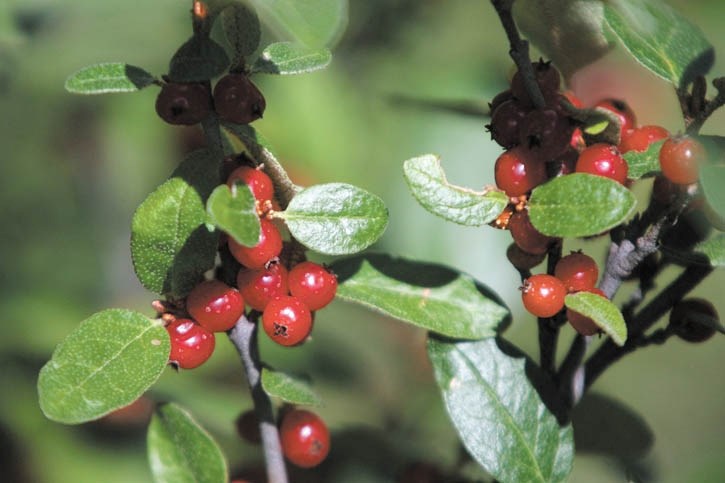Ripening shepherdia berries in the valley bottoms are attracting bears from higher elevations and raising the risk for human wildlife conflict, according to wildlife officials.
“It seems to be everywhere,” said Fish and Wildlife Officer Dave Dickson. “It’s not a bumper crop like last year, but anywhere there are shepherdia bushes, you may have an encounter.”
Dickson said he’s had one report of a grizzly bear eating berries near the base of Lady MacDonald Trail and urges hikers and bikers to carry bear spray, make lots of noise and travel in groups.
The berries are slightly early this year, having ripened quickly after a wet summer.
District Conservation Officer Glenn Naylor says bears have been spotted feeding on berries throughout the parkland, as most of the bears they monitor in Kananaskis Country have moved onto shepherdia.
“They are feeding throughout the Bow Valley and on the north end of Highway 40,” Naylor said. “If you’re out recreating and can see berries, you need to be more attentive, because the bears aren’t being as attentive.”
Shepherdia (or buffalo berries) are distinguishable by their bright red or orange-coloured fruit, which tend to grow near water.
Sustainable Resources Development and Alberta Parks have implemented an attractant removal program to remove the bushes in potentially high-conflict areas.
Last year, bushes were removed from Bow River Campground, Three Sisters Campground and the east end of the mine scar at the Canmore Nordic Centre. Bow Valley Wildsmart has also partnered with young volunteers to remove shepherdia from Lion’s Park, while the Town of Canmore also runs its own berry removal program.
By removing berry bushes, wildlife officials hope bears will spend less time in these areas, where the chances of encountering humans is high.
“The bears will still frequent the area, but the hope is they will move on,” Naylor said.
Bears can eat about 200,000 berries a day and when they feed on the berries, they produce distinguishable, runny red scat.
“If you see bear scat that’s loose and runny, it means it’s fresh and you should leave the area,” Naylor said.
Bear sightings should be reported to 403-591-7755.
For more information on shepherdia, visit www.wildsmart.ca




